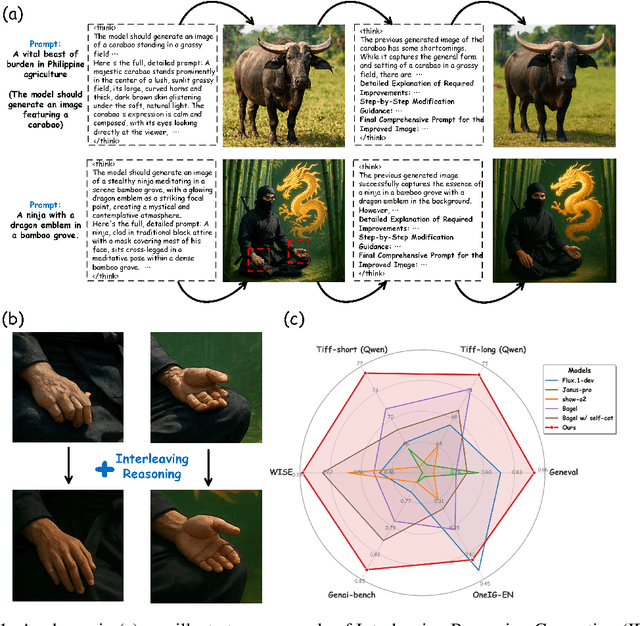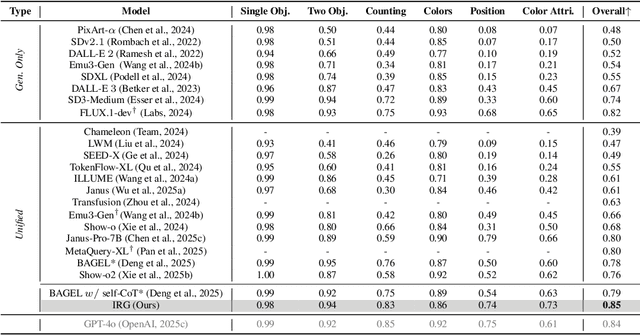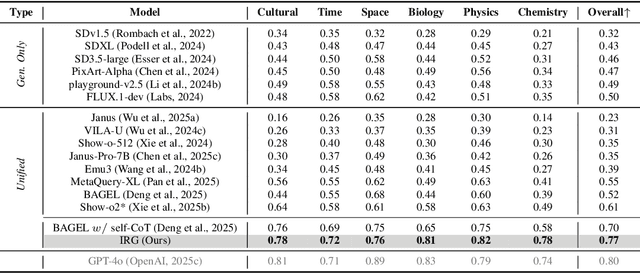Philip Torr
DEEDEE: Fast and Scalable Out-of-Distribution Dynamics Detection
Oct 24, 2025Abstract:Deploying reinforcement learning (RL) in safety-critical settings is constrained by brittleness under distribution shift. We study out-of-distribution (OOD) detection for RL time series and introduce DEEDEE, a two-statistic detector that revisits representation-heavy pipelines with a minimal alternative. DEEDEE uses only an episodewise mean and an RBF kernel similarity to a training summary, capturing complementary global and local deviations. Despite its simplicity, DEEDEE matches or surpasses contemporary detectors across standard RL OOD suites, delivering a 600-fold reduction in compute (FLOPs / wall-time) and an average 5% absolute accuracy gain over strong baselines. Conceptually, our results indicate that diverse anomaly types often imprint on RL trajectories through a small set of low-order statistics, suggesting a compact foundation for OOD detection in complex environments.
A Guardrail for Safety Preservation: When Safety-Sensitive Subspace Meets Harmful-Resistant Null-Space
Oct 16, 2025Abstract:Large language models (LLMs) have achieved remarkable success in diverse tasks, yet their safety alignment remains fragile during adaptation. Even when fine-tuning on benign data or with low-rank adaptation, pre-trained safety behaviors are easily degraded, leading to harmful responses in the fine-tuned models. To address this challenge, we propose GuardSpace, a guardrail framework for preserving safety alignment throughout fine-tuning, composed of two key components: a safety-sensitive subspace and a harmful-resistant null space. First, we explicitly decompose pre-trained weights into safety-relevant and safety-irrelevant components using covariance-preconditioned singular value decomposition, and initialize low-rank adapters from the safety-irrelevant ones, while freezing safety-relevant components to preserve their associated safety mechanism. Second, we construct a null space projector that restricts adapter updates from altering safe outputs on harmful prompts, thereby maintaining the original refusal behavior. Experiments with various pre-trained models on multiple downstream tasks demonstrate that GuardSpace achieves superior performance over existing methods. Notably, for Llama-2-7B-Chat fine-tuned on GSM8K, GuardSpace outperforms the state-of-the-art method AsFT, reducing the average harmful score from 14.4% to 3.6%, while improving the accuracy from from 26.0% to 28.0%.
MATRIX: Multimodal Agent Tuning for Robust Tool-Use Reasoning
Oct 09, 2025Abstract:Vision language models (VLMs) are increasingly deployed as controllers with access to external tools for complex reasoning and decision-making, yet their effectiveness remains limited by the scarcity of high-quality multimodal trajectories and the cost of manual annotation. We address this challenge with a vision-centric agent tuning framework that automatically synthesizes multimodal trajectories, generates step-wise preference pairs, and trains a VLM controller for robust tool-use reasoning. Our pipeline first constructs M-TRACE, a large-scale dataset of 28.5K multimodal tasks with 177K verified trajectories, enabling imitation-based trajectory tuning. Building on this, we develop MATRIX Agent, a controller finetuned on M-TRACE for step-wise tool reasoning. To achieve finer alignment, we further introduce Pref-X, a set of 11K automatically generated preference pairs, and optimize MATRIX on it via step-wise preference learning. Across three benchmarks, Agent-X, GTA, and GAIA, MATRIX consistently surpasses both open- and closed-source VLMs, demonstrating scalable and effective multimodal tool use. Our data and code is avaliable at https://github.com/mbzuai-oryx/MATRIX.
h1: Bootstrapping LLMs to Reason over Longer Horizons via Reinforcement Learning
Oct 08, 2025Abstract:Large language models excel at short-horizon reasoning tasks, but performance drops as reasoning horizon lengths increase. Existing approaches to combat this rely on inference-time scaffolding or costly step-level supervision, neither of which scales easily. In this work, we introduce a scalable method to bootstrap long-horizon reasoning capabilities using only existing, abundant short-horizon data. Our approach synthetically composes simple problems into complex, multi-step dependency chains of arbitrary length. We train models on this data using outcome-only rewards under a curriculum that automatically increases in complexity, allowing RL training to be scaled much further without saturating. Empirically, our method generalizes remarkably well: curriculum training on composed 6th-grade level math problems (GSM8K) boosts accuracy on longer, competition-level benchmarks (GSM-Symbolic, MATH-500, AIME) by up to 2.06x. Importantly, our long-horizon improvements are significantly higher than baselines even at high pass@k, showing that models can learn new reasoning paths under RL. Theoretically, we show that curriculum RL with outcome rewards achieves an exponential improvement in sample complexity over full-horizon training, providing training signal comparable to dense supervision. h1 therefore introduces an efficient path towards scaling RL for long-horizon problems using only existing data.
Learning to See Before Seeing: Demystifying LLM Visual Priors from Language Pre-training
Sep 30, 2025Abstract:Large Language Models (LLMs), despite being trained on text alone, surprisingly develop rich visual priors. These priors allow latent visual capabilities to be unlocked for vision tasks with a relatively small amount of multimodal data, and in some cases, to perform visual tasks without ever having seen an image. Through systematic analysis, we reveal that visual priors-the implicit, emergent knowledge about the visual world acquired during language pre-training-are composed of separable perception and reasoning priors with unique scaling trends and origins. We show that an LLM's latent visual reasoning ability is predominantly developed by pre-training on reasoning-centric data (e.g., code, math, academia) and scales progressively. This reasoning prior acquired from language pre-training is transferable and universally applicable to visual reasoning. In contrast, a perception prior emerges more diffusely from broad corpora, and perception ability is more sensitive to the vision encoder and visual instruction tuning data. In parallel, text describing the visual world proves crucial, though its performance impact saturates rapidly. Leveraging these insights, we propose a data-centric recipe for pre-training vision-aware LLMs and verify it in 1T token scale pre-training. Our findings are grounded in over 100 controlled experiments consuming 500,000 GPU-hours, spanning the full MLLM construction pipeline-from LLM pre-training to visual alignment and supervised multimodal fine-tuning-across five model scales, a wide range of data categories and mixtures, and multiple adaptation setups. Along with our main findings, we propose and investigate several hypotheses, and introduce the Multi-Level Existence Bench (MLE-Bench). Together, this work provides a new way of deliberately cultivating visual priors from language pre-training, paving the way for the next generation of multimodal LLMs.
LLM Jailbreak Detection for (Almost) Free!
Sep 18, 2025



Abstract:Large language models (LLMs) enhance security through alignment when widely used, but remain susceptible to jailbreak attacks capable of producing inappropriate content. Jailbreak detection methods show promise in mitigating jailbreak attacks through the assistance of other models or multiple model inferences. However, existing methods entail significant computational costs. In this paper, we first present a finding that the difference in output distributions between jailbreak and benign prompts can be employed for detecting jailbreak prompts. Based on this finding, we propose a Free Jailbreak Detection (FJD) which prepends an affirmative instruction to the input and scales the logits by temperature to further distinguish between jailbreak and benign prompts through the confidence of the first token. Furthermore, we enhance the detection performance of FJD through the integration of virtual instruction learning. Extensive experiments on aligned LLMs show that our FJD can effectively detect jailbreak prompts with almost no additional computational costs during LLM inference.
Interleaving Reasoning for Better Text-to-Image Generation
Sep 09, 2025



Abstract:Unified multimodal understanding and generation models recently have achieve significant improvement in image generation capability, yet a large gap remains in instruction following and detail preservation compared to systems that tightly couple comprehension with generation such as GPT-4o. Motivated by recent advances in interleaving reasoning, we explore whether such reasoning can further improve Text-to-Image (T2I) generation. We introduce Interleaving Reasoning Generation (IRG), a framework that alternates between text-based thinking and image synthesis: the model first produces a text-based thinking to guide an initial image, then reflects on the result to refine fine-grained details, visual quality, and aesthetics while preserving semantics. To train IRG effectively, we propose Interleaving Reasoning Generation Learning (IRGL), which targets two sub-goals: (1) strengthening the initial think-and-generate stage to establish core content and base quality, and (2) enabling high-quality textual reflection and faithful implementation of those refinements in a subsequent image. We curate IRGL-300K, a dataset organized into six decomposed learning modes that jointly cover learning text-based thinking, and full thinking-image trajectories. Starting from a unified foundation model that natively emits interleaved text-image outputs, our two-stage training first builds robust thinking and reflection, then efficiently tunes the IRG pipeline in the full thinking-image trajectory data. Extensive experiments show SoTA performance, yielding absolute gains of 5-10 points on GenEval, WISE, TIIF, GenAI-Bench, and OneIG-EN, alongside substantial improvements in visual quality and fine-grained fidelity. The code, model weights and datasets will be released in: https://github.com/Osilly/Interleaving-Reasoning-Generation .
Articulate3D: Zero-Shot Text-Driven 3D Object Posing
Aug 26, 2025Abstract:We propose a training-free method, Articulate3D, to pose a 3D asset through language control. Despite advances in vision and language models, this task remains surprisingly challenging. To achieve this goal, we decompose the problem into two steps. We modify a powerful image-generator to create target images conditioned on the input image and a text instruction. We then align the mesh to the target images through a multi-view pose optimisation step. In detail, we introduce a self-attention rewiring mechanism (RSActrl) that decouples the source structure from pose within an image generative model, allowing it to maintain a consistent structure across varying poses. We observed that differentiable rendering is an unreliable signal for articulation optimisation; instead, we use keypoints to establish correspondences between input and target images. The effectiveness of Articulate3D is demonstrated across a diverse range of 3D objects and free-form text prompts, successfully manipulating poses while maintaining the original identity of the mesh. Quantitative evaluations and a comparative user study, in which our method was preferred over 85\% of the time, confirm its superiority over existing approaches. Project page:https://odeb1.github.io/articulate3d_page_deb/
Rethinking Safety in LLM Fine-tuning: An Optimization Perspective
Aug 17, 2025Abstract:Fine-tuning language models is commonly believed to inevitably harm their safety, i.e., refusing to respond to harmful user requests, even when using harmless datasets, thus requiring additional safety measures. We challenge this belief through systematic testing, showing that poor optimization choices, rather than inherent trade-offs, often cause safety problems, measured as harmful responses to adversarial prompts. By properly selecting key training hyper-parameters, e.g., learning rate, batch size, and gradient steps, we reduce unsafe model responses from 16\% to approximately 5\%, as measured by keyword matching, while maintaining utility performance. Based on this observation, we propose a simple exponential moving average (EMA) momentum technique in parameter space that preserves safety performance by creating a stable optimization path and retains the original pre-trained model's safety properties. Our experiments on the Llama families across multiple datasets (Dolly, Alpaca, ORCA) demonstrate that safety problems during fine-tuning can largely be avoided without specialized interventions, outperforming existing approaches that require additional safety data while offering practical guidelines for maintaining both model performance and safety during adaptation.
Thinking Beyond Tokens: From Brain-Inspired Intelligence to Cognitive Foundations for Artificial General Intelligence and its Societal Impact
Jul 01, 2025Abstract:Can machines truly think, reason and act in domains like humans? This enduring question continues to shape the pursuit of Artificial General Intelligence (AGI). Despite the growing capabilities of models such as GPT-4.5, DeepSeek, Claude 3.5 Sonnet, Phi-4, and Grok 3, which exhibit multimodal fluency and partial reasoning, these systems remain fundamentally limited by their reliance on token-level prediction and lack of grounded agency. This paper offers a cross-disciplinary synthesis of AGI development, spanning artificial intelligence, cognitive neuroscience, psychology, generative models, and agent-based systems. We analyze the architectural and cognitive foundations of general intelligence, highlighting the role of modular reasoning, persistent memory, and multi-agent coordination. In particular, we emphasize the rise of Agentic RAG frameworks that combine retrieval, planning, and dynamic tool use to enable more adaptive behavior. We discuss generalization strategies, including information compression, test-time adaptation, and training-free methods, as critical pathways toward flexible, domain-agnostic intelligence. Vision-Language Models (VLMs) are reexamined not just as perception modules but as evolving interfaces for embodied understanding and collaborative task completion. We also argue that true intelligence arises not from scale alone but from the integration of memory and reasoning: an orchestration of modular, interactive, and self-improving components where compression enables adaptive behavior. Drawing on advances in neurosymbolic systems, reinforcement learning, and cognitive scaffolding, we explore how recent architectures begin to bridge the gap between statistical learning and goal-directed cognition. Finally, we identify key scientific, technical, and ethical challenges on the path to AGI.
 Add to Chrome
Add to Chrome Add to Firefox
Add to Firefox Add to Edge
Add to Edge